The Psychology of Beer (and Wine, too)
How we consume beer, wine, and spirits is changed by the shape and size of the glass
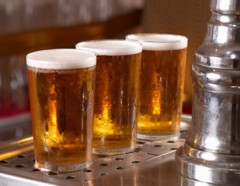 Most of us would guess the type of glass we’re drinking from doesn’t affect how much we drink. In fact, there’s a large body of research that shows the shape and size of the glass have a huge effect on how quickly we consume beer, wine, and other beverages.
Most of us would guess the type of glass we’re drinking from doesn’t affect how much we drink. In fact, there’s a large body of research that shows the shape and size of the glass have a huge effect on how quickly we consume beer, wine, and other beverages.
Curvy Glass, Goes Down Fast
Researchers at the University of Bristol in the UK gave subjects a glass of beer. The subjects, who didn’t realize their consumption was being carefully monitored, watched a short documentary film and answered a few questions. The subjects were served in either a “fluted” glass with a curvy taper to a narrow base or a straight-sided glass. The straight-sided-glass subjects were an amazing 60% slower in finishing their glass of beer – nearly 12 minutes, vs. 7 minutes for the fluted-glass group.
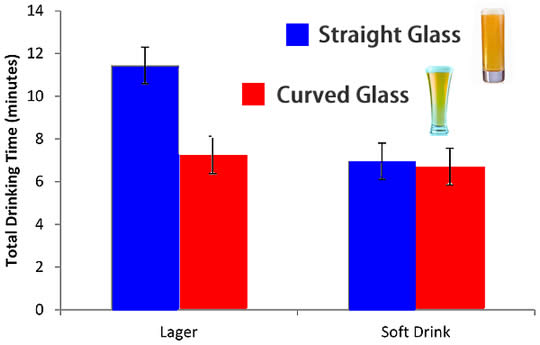
The researchers attribute the difference to the difficulty of estimating the halfway point in the curvy glass. In other words, those drinkers had the wrong impression of how far along they were. Subsequent tests appeared to confirm this. When the glasses were provided half-full, there was no difference in speed of consumption. In addition, the researchers confirmed that subjects viewing the straight glass were much more accurate in estimating the half-full point.
Curvy glass, goes down fast! The shape and size of the glass have a huge effect on how quickly we consume beer, wine, and other beverages. #Neuromarketing Share on X
Beer vs. Soft Drinks
Another surprising finding was that the slower consumption effect of the straight glass was totally absent for soft drinks. The soft drink in either glass shape was consumed in about the same time as the “fluted glass” beer was, i.e., the faster rate.
Short and Wide, Tall and Skinny
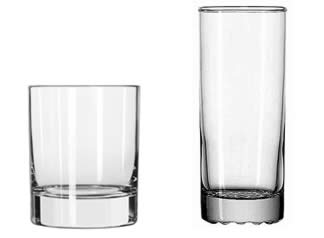 Another shape effect on beverage consumption has been measured, this time with juice. A Cornell study found that subjects both poured and consumed more juice when they used a short, wide glass vs. a tall, thin glass. The effect was most pronounced in children, who poured and drank 74% more juice in the short, wide glass condition. Adults were hardly immune, though, their consumption rose by 19%.
Another shape effect on beverage consumption has been measured, this time with juice. A Cornell study found that subjects both poured and consumed more juice when they used a short, wide glass vs. a tall, thin glass. The effect was most pronounced in children, who poured and drank 74% more juice in the short, wide glass condition. Adults were hardly immune, though, their consumption rose by 19%.
As with the curved/straight study, the cause appears to be our difficulty in estimating volumes. In this case, it’s caused by the “vertical-horizontal illusion,” a term for the human tendency to focus on heights more than widths. According to study author Brian Wansink, “When pouring into glasses, we tend to focus on the height of the beverage and basically ignore the width. That’s why we over pour into wide glasses but think we poured very little.” [Emphasis added.]
A 2016 study by French and Italian scientists also examined the effects of elongated glasses using an alcoholic beverage. They found that consumers expressed more satisfaction with the amount of drink they were served when it was presented in a tall, thin glass. This would seem to confirm Wansink’s idea that we tend to focus on the height of the drink and pay little attention to the width.
Bartenders Fooled, Too
Even professional bartenders are subject to the short/wide pouring error. A variation on the experiment with juice found that experienced bartenders asked to pour a standard shot poured an average of 27% more into short, wide glasses than tall, thin ones. (So, when you order a shot of that 25-year old Macallan Sherry Oak, be sure to point at the shortest, widest rocks glass and tell the bartender, “In THAT glass, please.”)
That the wide vs. narrow effect was found to affect both juice and spirits, it seems likely that it would apply to beer as well.
With Wine, Size Matters
Unlike beer, cocktails, and soft drinks, wine is usually served in a partially-filled glass. Leaving space above the liquid surface allows drinkers to sniff the wine’s “nose,” an important part of wine tasting. This practice also provides a perfect opportunity for further experimentation on container effects.
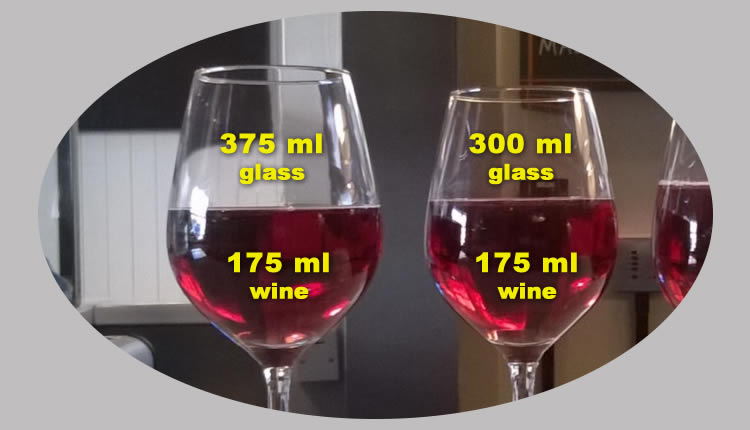
In a bar in Cambridge, England, researchers measured alcohol consumption when, at different times, the size of the glass was changed even though the serving size was not. The typical “pour” was 175ml, slightly less than 6 ounces. The standard glass size was 300 ml, or about 10 ounces. Changing the glass size to 375 ml, or 12.7 ounces, caused bar patrons to drink 14.4% more wine.
Most likely, the reason for higher consumption is caused by the general condition that portions are perceived to be smaller when served in larger containers. It may also be more difficult to estimate portion size when much of the container is empty, rather like the short, wide glass experiment.
In this experiment, the portions were accurately measured. An interesting variation would be to see how the glass sizes affected consumption when the drinkers poured their own wine. Based on the spirits experiment described earlier, it seems likely that subjects might tend to pour a bit more into the larger glasses.
You'll drink more wine if your glass is bigger. Glass shape and size have a huge effect on how quickly we consume beer, wine, and other beverages. #Neuromarketing Share on X
Shaping a Strategy
Bars and restaurants are in a tricky situation when it comes to alcoholic beverages. While every establishment wants to maximize sales, the operators must also be careful not to encourage over-consumption to the point of inebriation. In my experience, the majority of establishments do use curved, or at least tapered, glasses for serving beer. It may not have been a conscious decision, but they have clearly gravitated toward glass shapes that favor more rapid consumption. Not only does this boost sales, it may also enable restaurant and bar operators to turn over tables more quickly for patrons who plan to consume just one beer – another key factor in profitability.
Shorter, wider glasses may speed up consumption of all beverages, too. But bar owners beware – while beer and soft drinks will be poured to the capacity of the glass regardless of shape, hand-pouring spirits into that kind of glass might result in significant over-pouring even by trained staff. For bars that serve beer by the pitcher, wider glasses could speed up consumption and table turnover. Another wide-glass risk is that patrons may consume more (good for sales) but be less satisfied with the amount of each pour (bad for reviews and repeat visits).
As individuals, we need to be mindful of these shape effects too. If we’re trying to limit our calorie or alcohol intake, we’re better off with tall, straight, slender glasses for beer and just any other beverage. Both curved glasses and wide glasses are likely to make us underestimate our consumption.
One way to avoid overconsumption (or underconsumption, if that’s your concern) is to use well-marked containers for your beverages. While researching this article, I discovered these delightfully nerdy beer mugs and wine glasses that look like you swiped them from your high school chemistry lab:
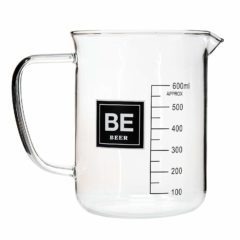
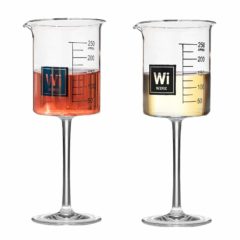
I’m quite certain that establishments that seek to maximize sales won’t adopt these carefully calibrated cylinders for serving beer, wine, or spirits. Savvy bar owners will use unmarked glasses in shapes and sizes that will exploit the psychology of how we perceive levels and volumes.
